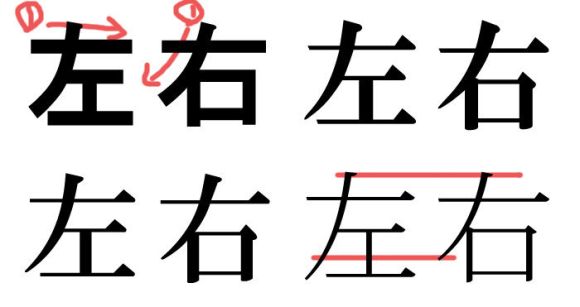
Kanji have to be one of the most headache-inducing parts of studying Japanese. Sure, it looks really impressive when you can scribble out a haiku for your friends, but is it really worth all the hassle? Not only are the little buggers incredibly difficult to remember, but sometimes there’ll be as many as five or more different readings for a single one, or you’ll discover that there’s an archaic version of the same character that’s sometimes used, seemingly for no other reason that to be confusing.
And then there’s the stroke order. After studying for a while you usually get the hang of it as there are certain rules that apply to certain types of lines, but there’s always those few that buck the trend and have you crying tears of frustration into your piles of textbooks and flashcards. Thanks, Japan. Or should that be China?
The kanji for “left” and “right” are two characters that students of Japanese learn early on in their studies. While they’re a perfect example of confusingly similar characters, they’re easy enough to remember and write. You’d think that two sets of strokes that look almost identical would be written in the same order, but that would just be too easy. Despite how similar these two kanji look, the downward strokes are actually supposed to be different lengths! And this also means that you write them with different stroke orders.
Below you can see the two characters for left and right in a variety of fonts. To keep things simple, ‘left’ (左) is the one on the left. The red directional arrows show which stroke you start with when writing each one.
The red lines on the bottom right pair show how the downward strokes are actually different lengths. They start at the same point, but the one for ‘left’ extends further down than the one for ‘right’.
It seems arbitrary, but apparently the reason for the difference is that the two characters used today developed from more primitive pictographs that represented left and right hands. You can read more about the origin of the characters in Japanese here. Looking at the origins of a character can be fascinating and helpful, but a simpler way to get your head around and remember the stroke order is that left goes clockwise while right goes anticlockwise (sort of).
But before you start to despair of every reaching any degree of kanji fluency, remember that these days people mostly write on their PCs and smartphones, so correct stroke order is a dying art even among native Japanese speakers, let alone the ability to write tricky kanji without looking them up first. And if you already knew this bit of kanji-related trivia, then congratulate yourself on being a smarty pants, and try not to rub it in too much, please!
Source: Yukawa Net
Images: Yukawa Net